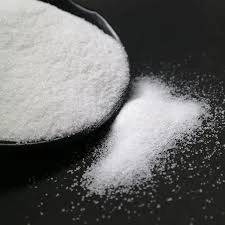Understanding Plastic Additives and Compounding Enhancing Material Performance
In the world of plastics, the properties and applications of materials can be dramatically influenced by the use of additives and the compounding process. Plastic additives are substances incorporated into plastic formulations to modify their properties, enhance performance, and enable specific functionalities. Compounding, on the other hand, involves the physical mixing of plastics with these additives and other materials to create a homogeneous product with desired characteristics. This article delves into the importance of plastic additives and compounding in developing high-performance plastic materials.
The Role of Plastic Additives
Plastic additives play a crucial role in tailoring the characteristics of plastic materials to meet the requirements of various applications. These additives can be categorized into several types, each serving a unique purpose
1. Stabilizers These additives protect plastics from degradation caused by heat, light, and oxygen. Examples include UV stabilizers that prevent discoloration when exposed to sunlight and thermal stabilizers that maintain structural integrity during processing.
2. Plasticizers Often used to increase the flexibility and workability of plastics, plasticizers reduce the glass transition temperature of polymers. This is particularly important for products like vinyl flooring and flexible tubing.
3. Fillers Fillers are materials that are added to plastics to reduce costs and improve certain properties, such as rigidity or impact resistance. Common fillers include talc, calcium carbonate, and glass fibers. They can also enhance the thermal and electrical properties of plastics.
4. Flame Retardants These additives enhance the flame-resistant properties of plastics, making them safer for consumer products and constructions. They work by either slowing the spread of fire or reducing the amount of heat generated.
5. Colorants Colorants, including dyes and pigments, are used to impart color to plastics. This is essential not only for aesthetic purposes but also for product identification and branding.
plastic additives and compounding

6. Antioxidants These additives help to prevent the oxidative degradation of polymers during processing and throughout their lifecycle, extending the service life of plastic products.
The Compounding Process
Compounding is the process of mixing polymers with additives to create a material that has enhanced properties for specific applications. This process can involve several methods, including melt compounding and solvent-based techniques.
In melt compounding, the polymer is heated until it reaches a molten state, allowing additives to be uniformly dispersed. This process is commonly executed in twin-screw extruders, which ensure thorough mixing and consistent quality. The resulting compounded material can then be processed into final products through methods such as injection molding, blow molding, or extrusion.
Benefits of Proper Additive Use and Compounding
The correct combination of additives and effective compounding can result in plastics that are not only high-performing but also tailored to specific environmental conditions and end-use requirements. For example, automotive parts require materials that can withstand high temperatures and resist impact, while packaging materials must be lightweight and provide barrier properties.
Moreover, advancements in additive technology are paving the way for smart materials that can respond to environmental stimuli. For instance, certain additives can grant plastics self-healing properties or conductivity, making them suitable for innovative applications in electronics and medical devices.
Conclusion
Plastic additives and the compounding process are integral to the performance and versatility of plastic materials. As industries continue to evolve, the demand for customized plastic solutions will grow, highlighting the importance of ongoing research and development in plastic additives. By understanding and leveraging these elements, manufacturers can produce materials that not only meet specific needs but also contribute to more sustainable and advanced applications in various fields.

